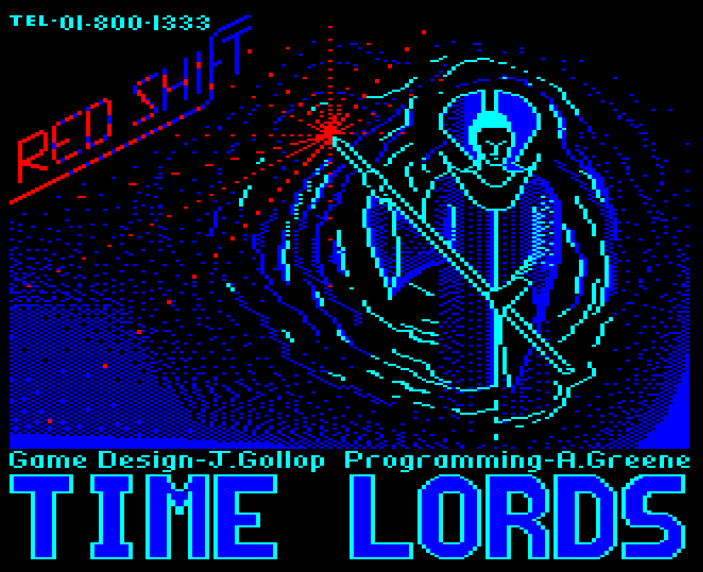
Lieutenant Narwhal, your next mission will be to conquer time itself. And let me congratulate you already, I know you will succeed !
You know that because if I had failed the mission we would not be having this conversation ?
No, I know that because the game is totally unbalanced and you rolled lucky !
Time Lords is the first game by Julian Gollop, of Rebelstar fame, and Laser Squad fame, and X-COM fame, and now of Phoenix Point contentious fame. The programming was done by Andrew Greene, a friend of Gollop. Time Lords is a significantly improved port of a board game designed by Gollop, and was published by Red Shift in March 1983, when both Gollop and Greene were around 18 years old.
In Time Lords, players are the champions of one of 5 races ripped straight from Doctor Who and must ensure that their race is the most influential throughout history, from the beginning of civilization to the end of time. The battleground spans on 15 time zones (“eras”) and 5 planets and the player is able to go back-and-forth across both.
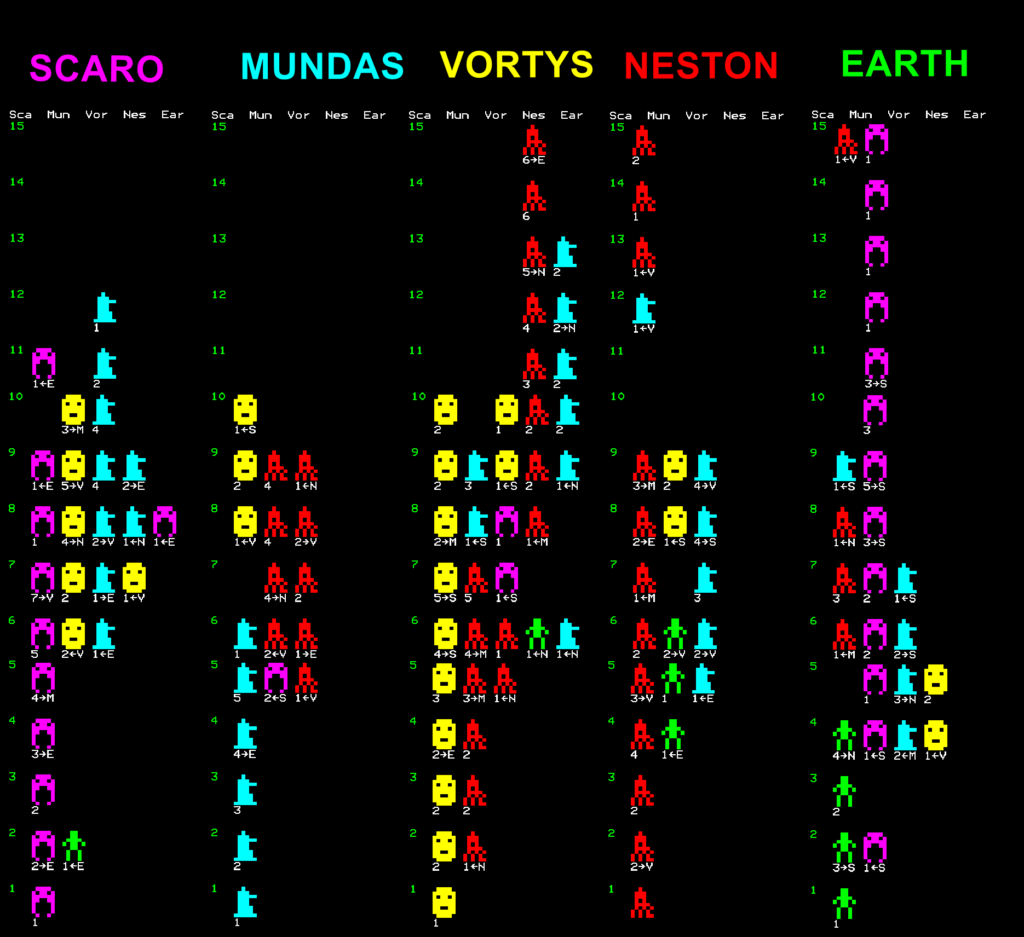
I will come back to each of these features.
The game is multiplayer first, and to give it a fair chance I gathered a crew of 5 players to go through the game in PBEM. Our archeogaming explorers are :
- Commenter Dayyalu, a veteran of this blog (Computer Ambush, Andromeda Conquest, The Wreck of the BSM Pandora). He will be the champion of the Cybermen, a race from planet Mondas (the 10th planet of the Solar System, as we all know) which pioneered in Doctor Who in 1966 and has been a recurring feature ever since.

- Commenter Argyraspide, who also contributed to saving the BSM Pandora, will champion the Zarbis. The Zarbis are an insect race from planet Vortis who first appeared in Doctor Who in 1965 and only once again in 1971 – a sobering reminder of what happens to races who lose this game.

- Fellow blogger Jason from Renga in Blue secretly took time from his investigation of giga-game Ferret to defend the humans, a mammal race introduced in the very first episode of Doctor Who in 1963 and which has appeared in every single season since then !

- My usual sparring partner Ahab, aka the Data Driven Gamer, is running the Nestene. The Nestene, of course, are *fingers* from the *outside* who have been *dancing* with *many bubbles* since 1970.

- Finally, I will be championing the one civilized race the galaxy has birthed : the Kaleds. They should not be confused with their creation : the more famous Daleks. As the main protagonists, the EX-TER-MI-NA-ting Daleks have been in Dr Who almost since the beginning, each episode showing a new way for the evil Dr Who to thwart their plans. As for the Kaleds, we have only shown our faces in 1975.
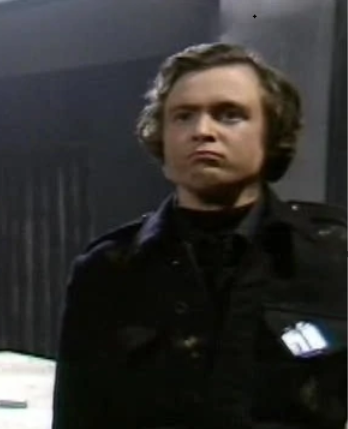
A side-note : the game sometimes uses names slightly different from the series, I assume for legal issues (” they’ll never catch us if we replace Cybermen by Cyburman and Gallifrey by Gallifry”). I am going to roll with the names the game uses, except “Cyburman” because this variation is too ridiculous to make the cut, and “Zarbys” because that i/y swap is petty.
The Time Lords start the game on Gallifry, a planet outside of time. They know nothing about the Universe, not even which of the 5 playable planets (Scaro, Mundas, Vortys, Neston, Earth) their protegees come from. They must explore ages and planets, interrogate whatever race they meet and act on this information to alter history.

I decide to jump on era 6 : late enough that whatever I find there will encompass a lot of information, but not so late that this information becomes noise. The planet doesn’t matter – I pick Vortys :
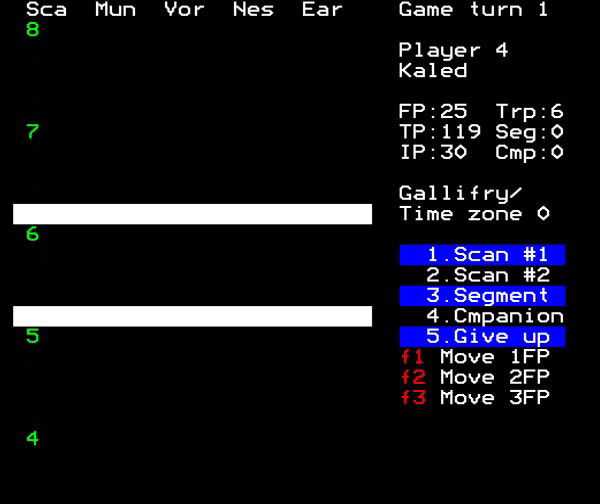
That’s where it gets tricky. Let’s see that again, in slow motion !
On Vortys-6, I find 4 races, but 5 different civilizations.
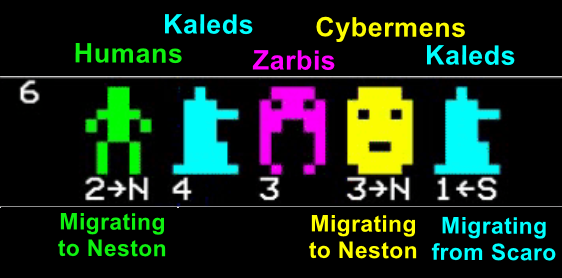
There are two branches of Kaleds on this planet / time. One seems to have been here for a long time (high civilization level) but the other just migrated from Scaro, as indicated by the notation <-S.
Similarly, two civilizations are sending migrants to Neston : the Humans and the Cybermen (->N notation).
Another important piece of information : there is a war between the powerful Kaleds and the Cybermen, as indicated by the flashing values in the GIF. Those wars are to the death, and they are exactly where I can shine, as I can draw from my pool of influence points to tilt this conflict. Obviously, I want the Kaleds to win, but the fact is that they are probably already winning due to their superior civ level.
Before investigating further, I ask the larger Kaled civilization about its history :

What a moving, empowering story ! The Kaleds immigrated from Neston to Vortys during Era 3, and have been thriving ever since, sending exterminators explorers to Earth (Era 4) and then Scaro (Era 5).
Last thing to check : did the brave Kaleds defeat the vile Cybermen ? I use a “scan #1” on the next Era. This action allows you to check an Era/Planet without actually moving there and losing a turn, but also costs resources. Here is what I see :
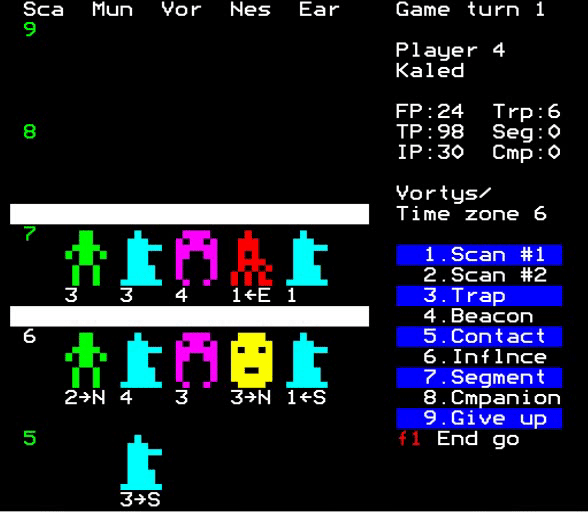
My babies exterminated the Cybermen, but oh no ! they started a fratricidal war ! Whoever wins, the Kaleds will lose influence – and there is nothing I can do.
My turn has ended, and I am now planning my next move, including trading intels with other Time Lords. I see several strat…
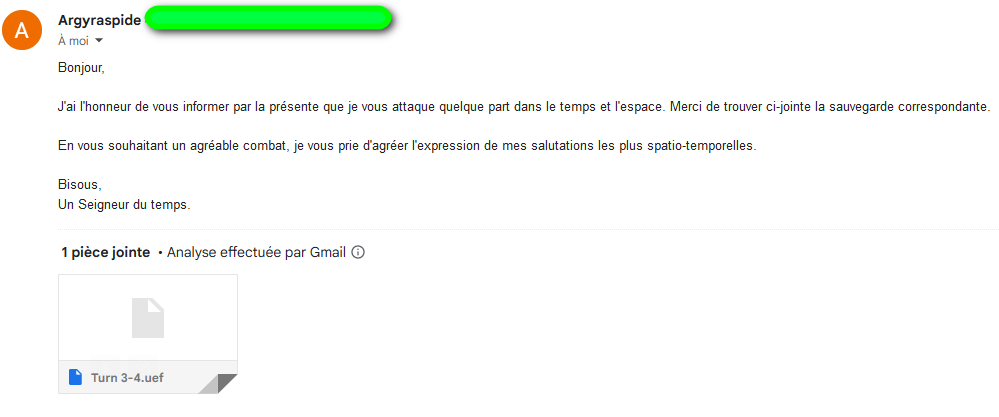
Well ! Well ! Well ! Argyraspide, the Zarbi Timelord, just jumped from Neston-6 to Vortys-6 . In hotseat, this is solved by both players deciding whether they attack or not at the same time. Due to the PBEM constraint, the rule is “if one player attacks, then we resolve the combat as if both players attacked”. Unfortunately for me, Argyraspide has found in Neston-6 a companion to help in combat, so of course he chooses to attack :
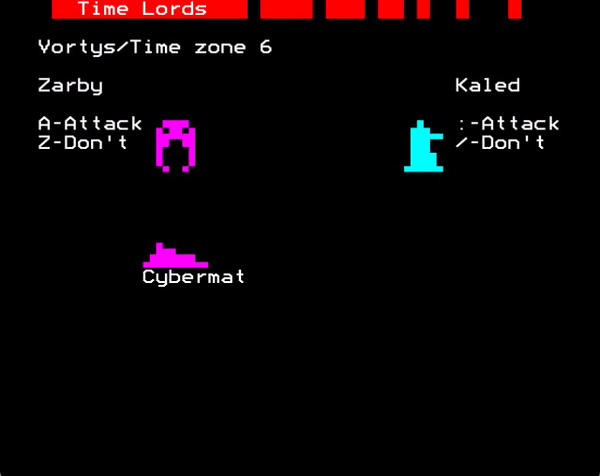
Uh ! Dead ! Way to ruin a perfectly good AAR, Argyraspide.
So since thanks to Argyraspide I don’t get to show you the whole game, let me dive in the mechanics a bit more.
Everything you need to know is displayed on the main screen, and there are 3 resources and 3 assets :
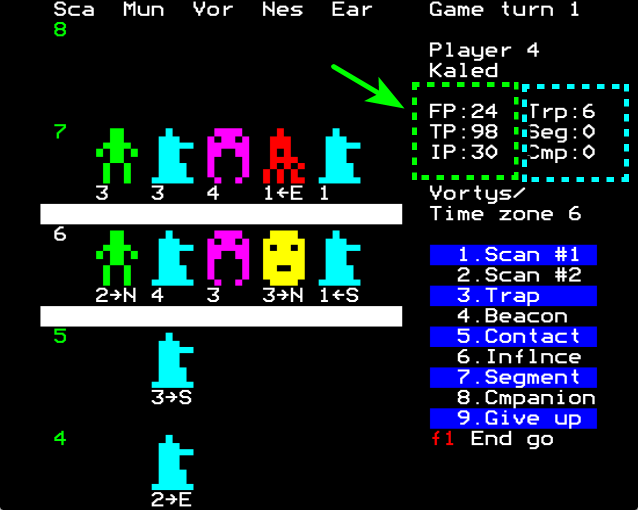
The resources are Fortification Points (FP), Time Points (TP) and Influence Points (IP). They can only go down
- Fortification Points are left behind you as you time-travel ; the more fortification points you leave (from 1 to 3), the better you will defend if another Time Lord ever jumps on that location, because of course you can be killed in one of your past turns. You start with 25 of them, but will only leave 1 on Gallifry (there is no return ticket), so you will play between 8 and 24 depending on how risk-averse you are,
- Time Points are the most important : they are consumed as you jump through time (longer jumps are more costly) but also when you try to scan areas you are not in, either to check the races there (scan #1) or to detect other Time Lords (scan #2). They are also consumed when you look for segments or companions,
- Finally, Influence Points are used to reverse the result of a war. You can spend 1 to 6 and start with 30 of these and, trust me, you are unlikely to see more than 6 wars you want to reverse, so use them liberally.
On the left, the three assets are :
- Time Traps – each Time Lord starts with 6 of them. In theory, they send players to another time location without them even figuring out they’re not where they think they are. In practice, I concluded these don’t work at all,
- Segments – if the 4 segments are found, then all players with at least one segment will see the complete map of the game. Segments can be found in the 4 locations with the highest civilisation levels, but we never managed to find the 4 of them in one game,
- Companions – you can have up to two and they support you in battle. The rule for finding them is pretty complicated and possibly buggy. Given that for most of the game you don’t have enough intel to know where they should be most of us just systematically searched for companions whenever we arrived in a new place. Argyraspide was luckier than I was.
Now let me tell you about the time beac… wait – I just received an email !
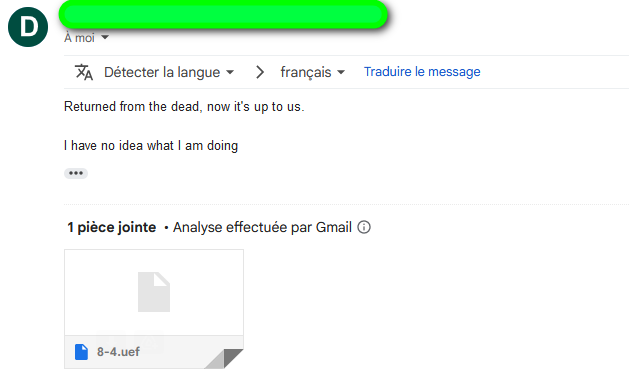
Uh… Why is Dayyalu sending me a turn ? Argyraspide was the person playing before me in the rotation, and more importantly I am dead and out the game. I think.
So what happened ? Well, a lot did. In those 7 turns I missed, Argyraspide leveraged his companion to go into a Time Lord-killing spree. He found and killed Jason, shortening another possible AAR. Then he found him and killed him a second time because he jumped into a time location where Jason had been in an earlier turn. Spooked, Ahab had tried to end the weird ant menace by jumping to Neston-6 to confront him (it?), but the combat had been a draw. When later Dayyalu also jumped to Neston-6, he met the two Time Lords one after the other and killed them both.
When a Time Lord is killed in a location, everything he did after leaving that location is undone. Neston-6 was the first jump of Argyraspide, so everything he did during the game was rolled back, including killing me and Jason. I am back.
Things have changed on Vortys-6 :
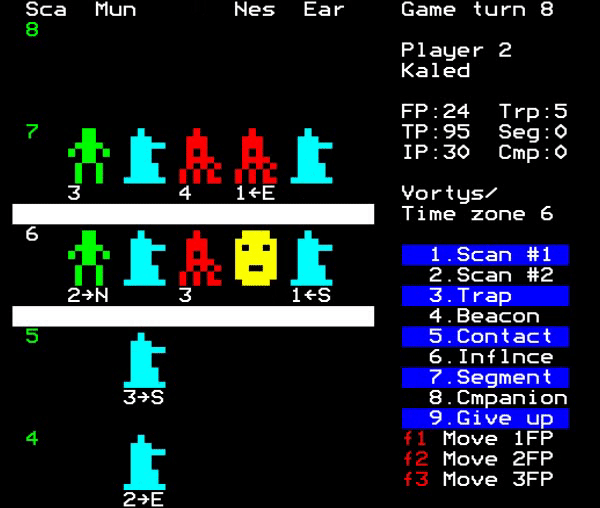
The Nestine replaced the Zarbis. I did not know it at the time but while Argyraspide was hunting Time Lords, Ahab was changing history. He had found a war between the Nestine and the Zarbis in Scaro-3, and used his influence to reverse its result : the Nestine won, and the Zarbis’ wings were clipped. That fateful change of result echoed through time & space, changing what I see in Vortys-6.
There are 3 players still in the game, and having been dead the longest I am the player with the most resources. On the other hand, Dayyalu is about to run out, so his best course of action is to try to locate Jason and me and kill us. Worse, we cannot try to kill him in an earlier location, because doing so could trigger a game-ending time paradox : killing him would “unkill” Argyraspide, which would reinstate our deaths and “unkill” Dayyalu.
I find it wise to flee to Vortis-10, reckoning that late-game locations are relatively safer – there is less leverage on history to be had there. Before that, I use a special scan (“scan #2”) which confirms there is no other Time Lord there. I make sure to leave 3 Fortification Points behind me.
In Vortys-10, I find a powerful Nestine civilization, and some Kaleds who tell me they are the winners of another fratricidal war. I really need to do something about the Nestines.

Dayyalu knows where I am from earlier group discussions and jumps on Vortys-6 to attack Past Me, but my fortification level pays off.
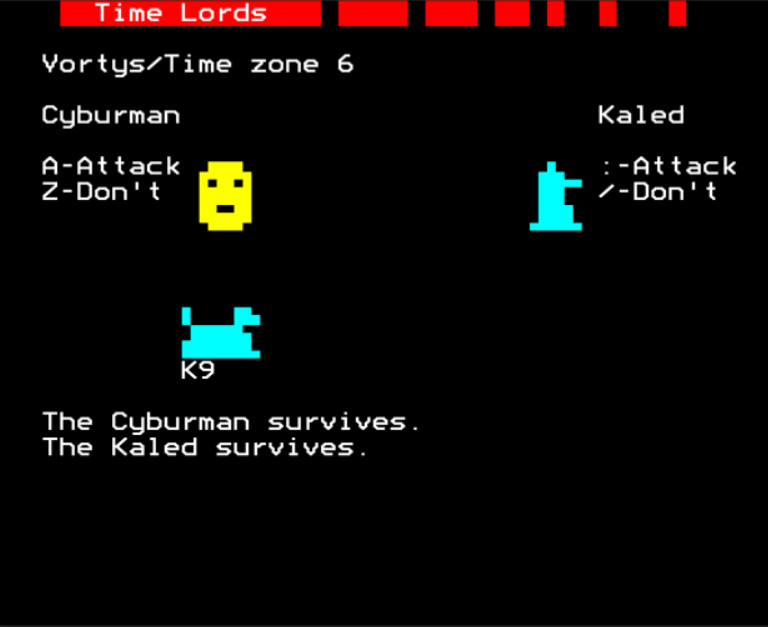
At least, this proves I was correct in my assumptions about Dayyalu’s strategy, and that I should lay low for a few more turns.

The 10th era seems safe, and Dayyalu should soon run out of energy, so I side-step to Scaro-10, leaving 2 Fortification Points behind me.
Scaro-10 is mixed news. The bad news is that once again I see Kaleds engaged in a fratricidal war. The good news is that there are only Kaleds, so clearly they exterminated every other race here. No need to spend more effort on that planet.
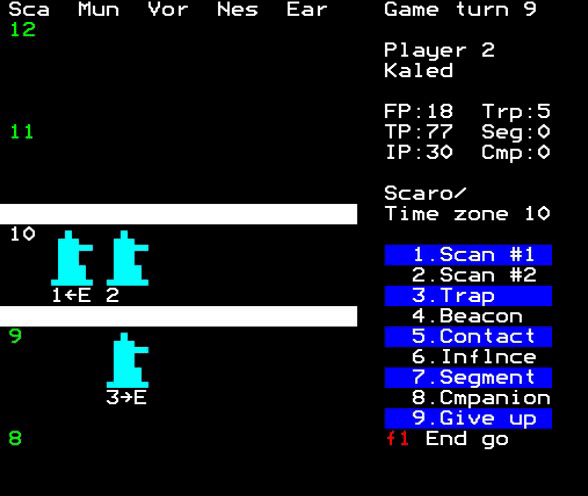
I was not attacked this turn, so possibly my “era 10” strategy works ? With a maximum of two more turns to hold, I jump to Earth-10 where I find Kaleds peacefully coexisting with humans. Shameful.

Alas, it is my last turn. Dayyalu finds out about my passage on Vortys-10, where I had skimmed on Fortification Points. I do not survive.
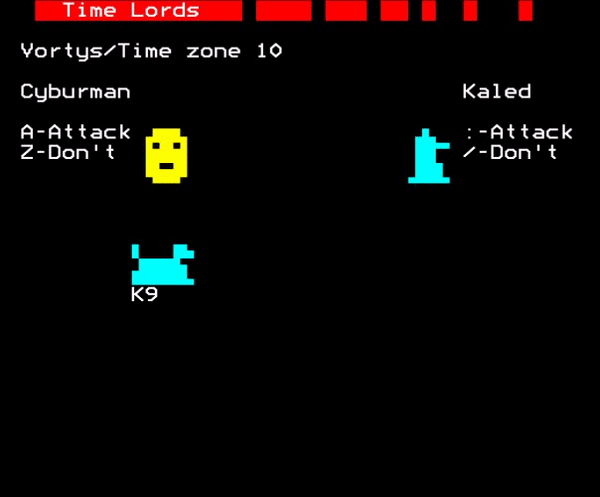
Almost immediately after my death, the game ended. Dayyalu had exhausted his last drop of energy, but Jason still had turns to run, so possibly a Time Paradox of some sort happened. We have no idea which one.
Let’s see the score :
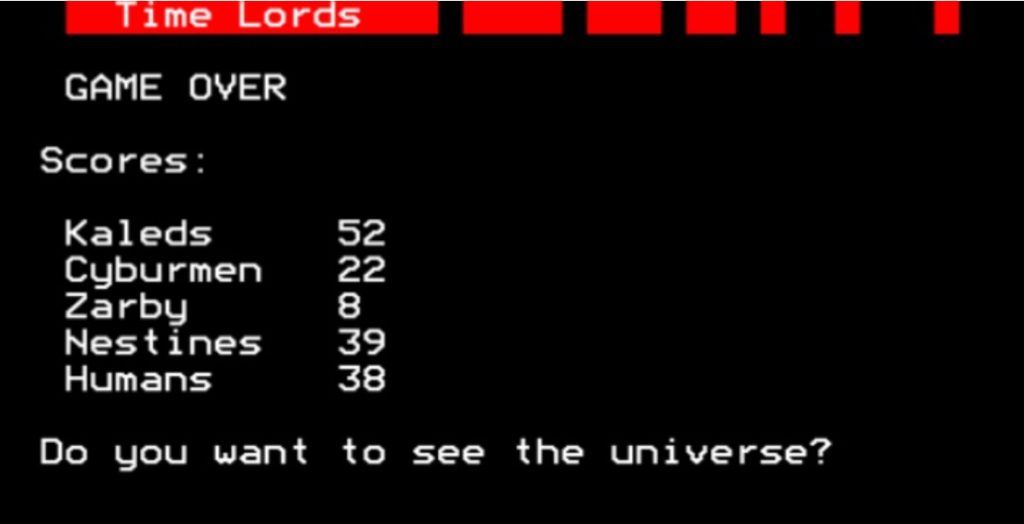
Yes, I won, even though I never had the opportunity to help the Kaleds and was dead most of the time. Did the other players neutralize one another while I was dead ?
No ! The game started massively unbalanced, with the Kaleds starting with a massive advantage :
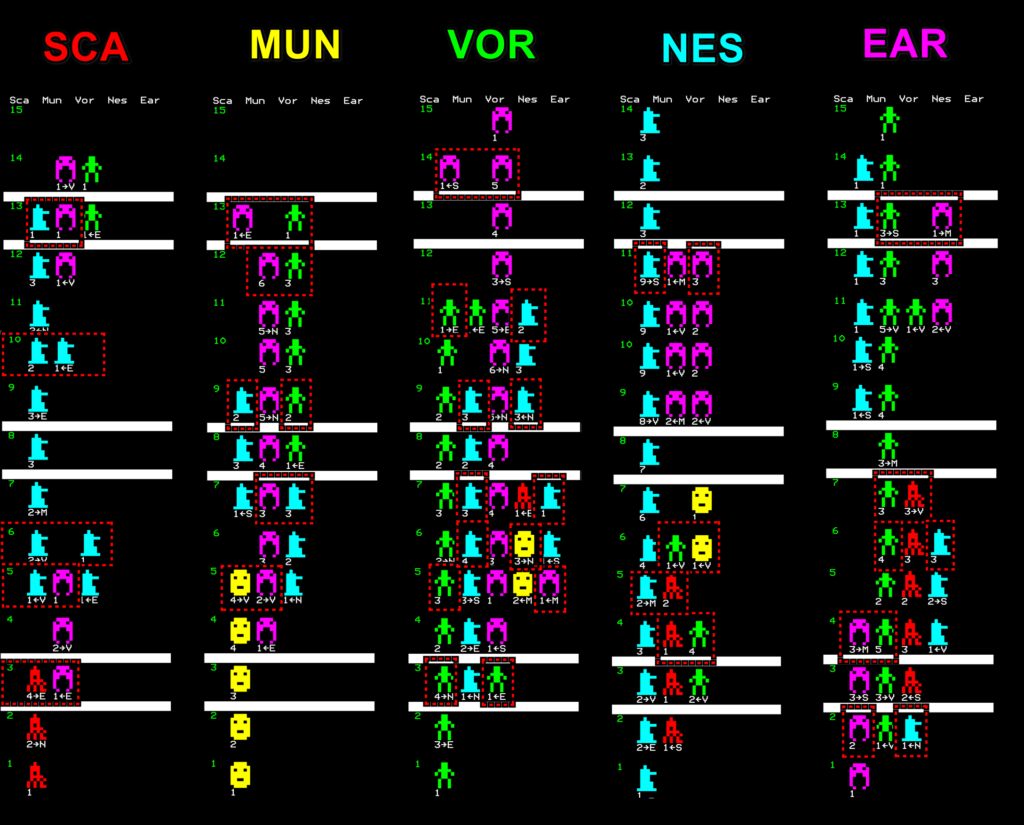
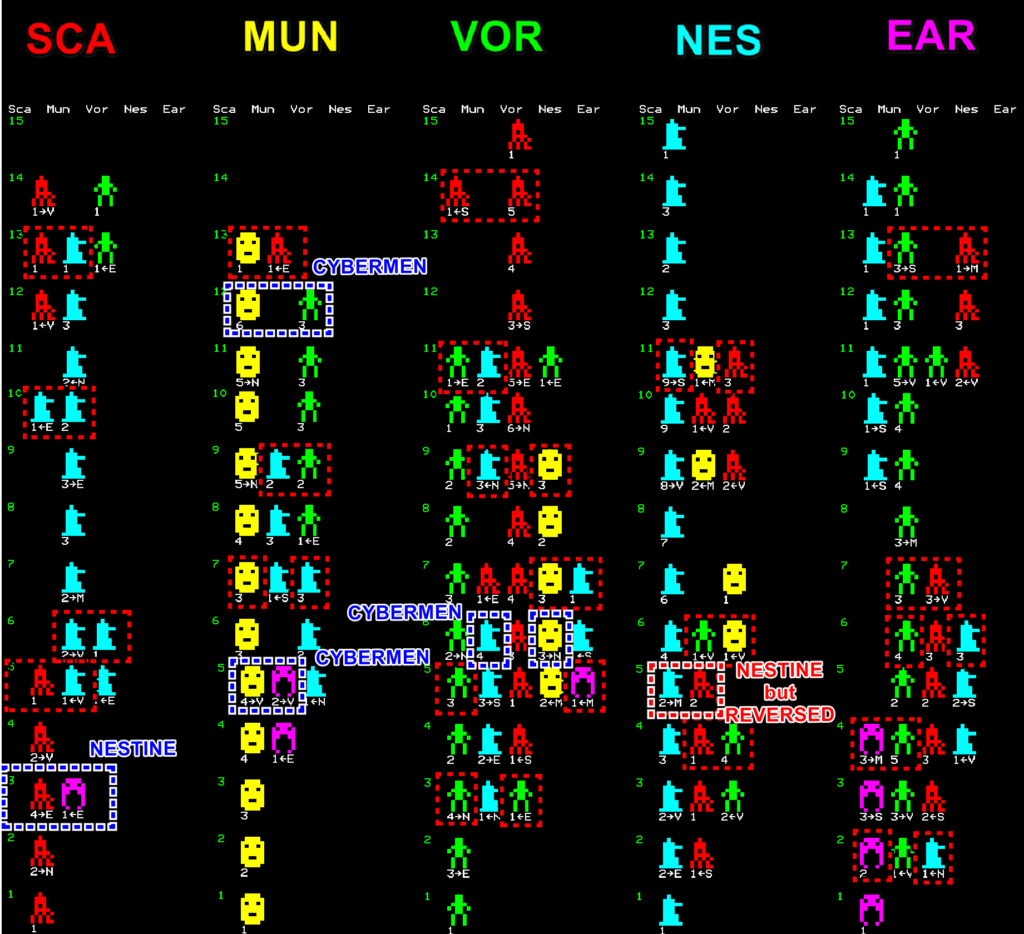
The blue rectangles are the wars whose result was reversed by a Time Lord, and I added who reversed them.
- The Kaleds started with the most favourable position by far. They migrated again and again before being engaged in a war – indeed they could lose all their wars and still reach era 13 on Scaro and finish third !
- Meanwhile, the Nestines and the Zarbis had the potential to reach first place, as both underwent a lot of migrations and had early wars (Scaro-3 for the Nestines, Earth-4 for the Zarbis) they could turn around. Ahab actually managed to be first at some point, before his death rolled that back.
Finally, neither the Humans nor the Cybermen had a chance :
- The Cybermen had limited potential to grow, as they never migrated before Era 5, wasting precious time. Even though Dayyalu managed to reverse all the Cybermen defeats except one in Vor-9, he still finished in the 4th place.
- As for the Humans, they only lost one war on Neston-6 in their initial history, and in my post-game test I found out that reversing that war would have given them a grand total of one (1) more point. For the Humans, the only possible change was downward.
That’s all for my AAR, but don’t hesitate to check Ahab’s – he was a lot more active. It was not fun, except for the joy of discovery, but I am happy to have played a time travel strategy game for the first time in my life. And again, the game was mostly designed and coded by two persons who were 18 at most, and all of them had learned to code by copying type-in games from magazines.
Unrelated, I am about to cover Eagles, a game about air battles above the Western Front in World War I. There is a campaign mode, and if some of you want to propose their names to join my Jasta, please do so. It is going to be totally non-interactive, I just want to avoid calling my wingman “Pilot #12” as the game does.

Find the review and the history of Time Lords here.